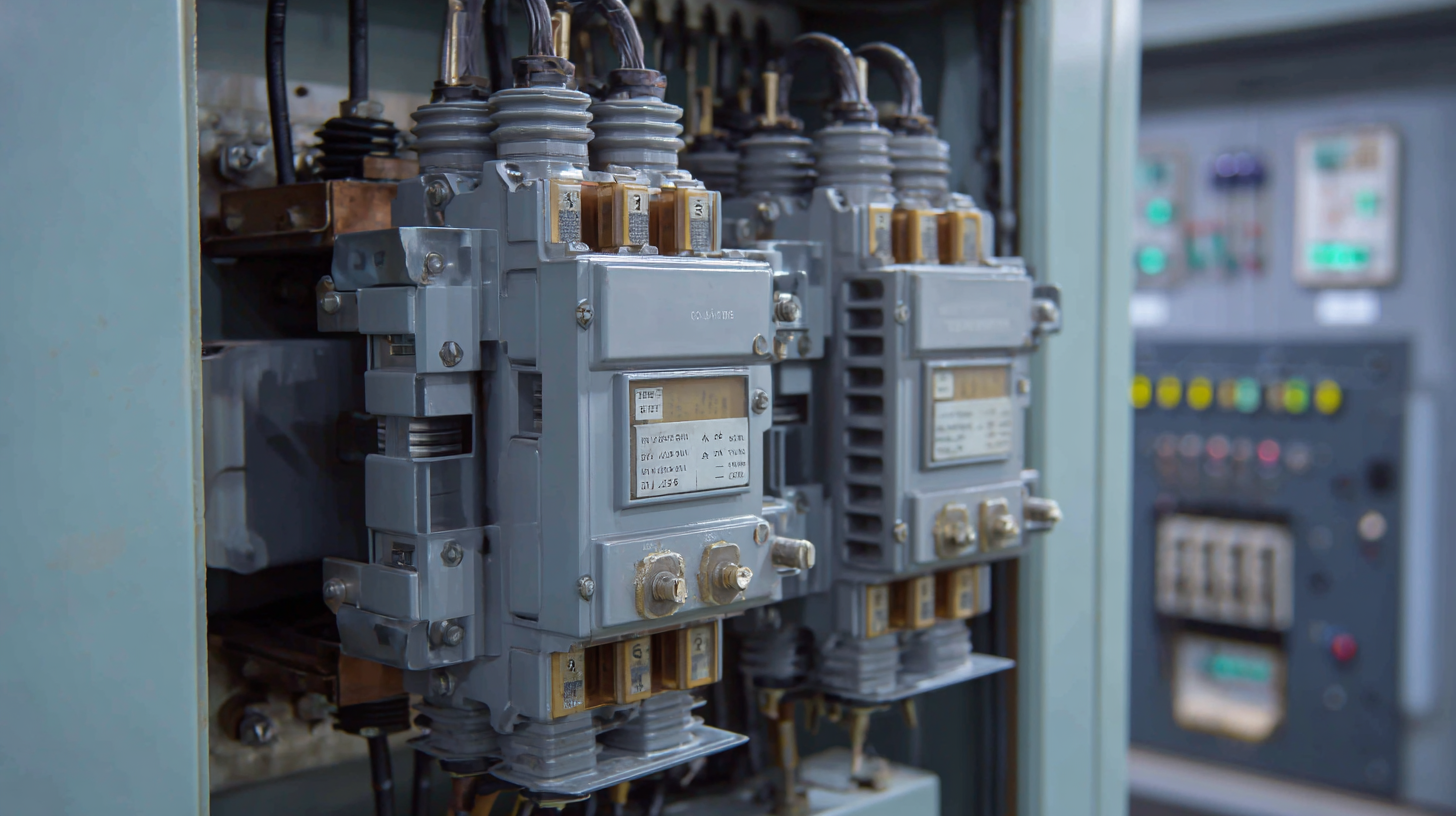
-
Home
-
About Us
-
Products
-
News
-
Blog
-
Contact Us
Leave Your Message

In the realm of energy management, the significance of a Power Transformer Fuse cannot be overstated. This critical component not only ensures the protection of power transformers from potential overloads and short circuits but also plays a vital role in enhancing the overall efficiency of energy systems. By incorporating advanced fuse technology, energy providers can safeguard their infrastructure, minimize operational downtime, and reduce maintenance costs. The benefits of Power Transformer Fuses extend beyond mere protective measures; they are integral to optimizing energy distribution and ensuring sustainable operations. This article delves into the seven greatest advantages of Power Transformer Fuses, shedding light on how they contribute to efficient energy management and bolster the reliability of power systems in an increasingly energy-dependent world. Understanding these benefits is essential for stakeholders in the energy sector seeking to improve performance and resilience in their operations.

 Power transformer fuses play a pivotal role in enhancing
energy efficiency within electrical systems. They act as protective devices that safeguard transformers
from overloads and short circuits, which can lead to significant energy losses and equipment damage. By promptly
interrupting excessive currents, these fuses ensure that transformers operate within their optimal range, thereby
reducing the risk of inefficiencies that can stem from overheating and equipment failure. Moreover, the quick
response time of fuses minimizes downtime and maintenance costs, allowing for more stable energy distribution
and management.
Power transformer fuses play a pivotal role in enhancing
energy efficiency within electrical systems. They act as protective devices that safeguard transformers
from overloads and short circuits, which can lead to significant energy losses and equipment damage. By promptly
interrupting excessive currents, these fuses ensure that transformers operate within their optimal range, thereby
reducing the risk of inefficiencies that can stem from overheating and equipment failure. Moreover, the quick
response time of fuses minimizes downtime and maintenance costs, allowing for more stable energy distribution
and management.
Additionally, the integration of power transformer fuses contributes to overall grid reliability. In an era where energy efficiency is paramount, these fuses help in maintaining consistent voltage levels and reducing harmonic distortions. This stability not only enhances the performance of the electrical system but also promotes the longevity of equipment connected to the grid. As energy demands continue to rise, the importance of utilizing power transformer fuses becomes increasingly clear—ensuring efficient energy management while supporting a sustainable and resilient energy infrastructure.
Enhanced protection through the use of power transformer fuses plays a critical role in energy management, offering significant reductions in maintenance costs. Fuses serve as a reliable safeguard against overloads and short circuits, which can otherwise lead to costly damages and prolonged downtimes. By preventing electrical faults, fuses ensure that systems remain operational, thus minimizing disruptions and maintenance needs. This proactive approach not only lowers repair expenses but also extends the lifespan of transformers, making them a cost-effective solution for energy providers.
Moreover, the increased adoption of fused disconnect switches is forecasted to drive market growth significantly, with projections suggesting an increase from $6.37 billion in 2025 to $10.06 billion by 2032. This surge underscores the importance of advanced protective measures in efficient energy management. As organizations seek to optimize their operations and reduce costs, incorporating fuses as a part of their protective strategy will continue to be a pivotal factor in achieving reliability and efficiency in the energy sector.
| Benefit | Description | Impact on Maintenance Costs | Energy Efficiency Improvement |
|---|---|---|---|
| Overcurrent Protection | Fuses provide fast interruption during overload conditions, reducing damage. | Lower repair costs for transformers and associated equipment. | Minimized downtime leads to consistent energy production. |
| Reduced Downtime | Quick and easy replacement of fuses maximizes operational uptime. | Decreased maintenance scheduling reduces labor costs. | Higher availability of energy systems increases efficiency. |
| Cost-Effectiveness | Fuses are generally less expensive to install and replace than circuit breakers. | Significant cost savings on initial setup and long-term replacements. | Efficiency in spending enhances overall energy resource management. |
| Space-Saving | Fuses require less physical space compared to other protective devices. | Reduced infrastructure costs due to smaller equipment footprint. | Optimized layout leads to more efficient energy flow. |
| Safety Enhancement | Fuses help to protect both equipment and personnel from faults. | Reduced risk of accidents lowers insurance and liability costs. | Enhanced safety leads to uninterrupted energy services. |
| Simplicity and Reliability | Fuses operate with straightforward mechanics ensuring reliability. | Lower complexity reduces maintenance frequency and costs. | Reliable operation contributes to a stable energy delivery system. |
| Environmentally Friendly | Fuses can be recycled, contributing to sustainable energy practices. | Lower environmental disposal costs for defective units. | Improved sustainability enhances corporate energy efficiency goals. |
Reliable performance in power systems is crucial for minimizing downtime and ensuring the continuous supply of electricity. Power transformer fuses play a vital role in this context by offering a protective mechanism that swiftly isolates faults in the system. When a fault occurs, these fuses detect the overcurrent and blow, preventing further damage to the transformer and maintaining the integrity of the power network. This rapid response not only safeguards equipment but also helps to reduce the duration of outages, ensuring that consumers experience minimal disruption.
Moreover, the use of power transformer fuses enhances the overall efficiency of energy management within power systems. By minimizing the likelihood of catastrophic failures, these fuses contribute to a more stable operating environment. This stability is essential for utility operators who rely on consistent performance to meet demand and manage resources efficiently. In turn, the reduction of unexpected downtimes leads to decreased maintenance costs and improves the reliability of the energy supply, making power transformer fuses an indispensable component in modern power management strategies.

Fusion technology has revolutionized safety standards in electrical infrastructure, particularly in the realm of power transformers. By integrating advanced fuses into transformer systems, the risk of electrical faults can be significantly reduced. These fuses are designed to act swiftly during fault conditions, thereby minimizing damage to equipment and ensuring continuous operation. Their ability to interrupt excessive current flow prevents potential overloads, safeguarding not just the transformers, but also the surrounding electrical network.
Moreover, the deployment of fusion technology enhances the overall resilience of electrical systems. With improved safety features, operational reliability is paramount, allowing for more efficient energy management. As a result, utility companies are able to optimize their resources, accommodating higher loads while mitigating the chances of catastrophic failures. Thus, the implementation of power transformer fuses, powered by fusion technology, not only elevates safety standards but also contributes to a more sustainable and efficient energy landscape.
Power transformer fuses are becoming increasingly recognized as a cost-effective solution for energy facilities, particularly in the context of rising operational costs and sustainability initiatives. The integration of fuses within power management systems not only enhances reliability but also mitigates expenses associated with unplanned outages. This proactive approach is essential as industries look to navigate digital transformations and sustainability challenges.
Tips: Regular maintenance checks on fuses can significantly extend their lifespan and efficiency. Furthermore, investing in smart sensor technologies can enable facilities to monitor performance in real-time, allowing for immediate response to potential issues.
With the power sector's ongoing shift towards sustainable practices, utilizing fuses is a strategic investment. As energy regulations tighten and efficiency standards rise, power transformer fuses emerge as a logical choice that aligns with both economic and environmental objectives. By adopting such solutions, facilities are prepared to embrace Industry 4.0 advancements, ultimately leading to optimized energy management strategies.
Tips: Consider implementing a cloud-based platform to evaluate fuse performance and benefits. This modern approach not only enhances data accessibility but also supports the overall digital transformation goal within the power industry.
This chart illustrates the seven key benefits of power transformer fuses in energy management, highlighting their cost-effectiveness and overall value for energy facilities.





